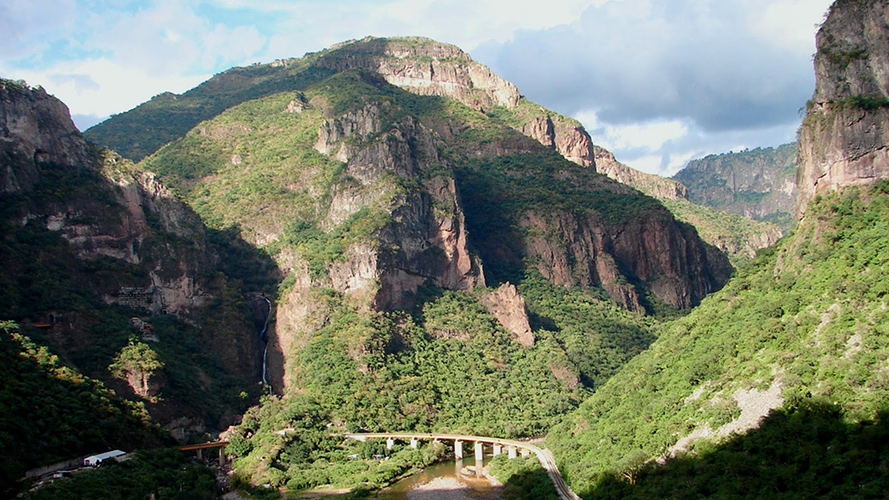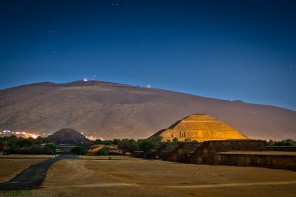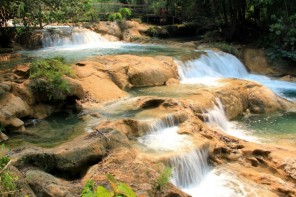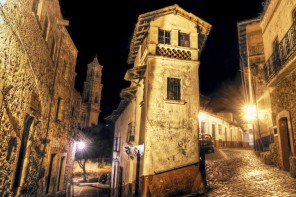Copper Canyon (Spanish: Barranca del Cobre) is a group of canyons consisting of six distinct canyons in the Sierra Tarahumara in the southwestern part of the state of Chihuahua in Mexico. The overall canyon system is larger and portions are deeper than the Grand Canyon in neighboring Arizona.[1] The canyons were formed by six rivers which drain the western side of the Sierra Tarahumara (a part of the Sierra Madre Occidental). All six rivers merge into the Rio Fuerte and empty into the Sea of Cortez. The walls of the canyon are a copper/green color which is where the name originates.
History
The Spanish arrived in the Copper Canyon area in the 17th century and encountered the indigenous locals throughout Chihuahua. For the Spanish, Mexico was a new land to explore for gold and silver and also to spread Christianity. The Spanish named the people they encountered “Tarahumara”, derived from the word Raramuri, which is what the indigenous people call themselves. Some scholars theorize that this word may mean ‘The running people’. During the 17th century, silver was discovered by the Spaniards in the land of the Tarahumara tribe. Some were enslaved for mining efforts. There were small uprisings by the Tarahumara, but to little avail. They were eventually forced off of the more desirable lands and up into the canyon cliffs.
Climate
The alpine climate of the mountainous regions of Copper Canyon has moderate temperatures from October to November and March to April. The bottom of the canyons is humid and warm and remains that way throughout the year. During the warmest months, April through June, drought is a chronic problem with little rainfall until July when the rainy season begins.
Flora and Fauna
The Sierra Tarahumara Occidental region contains some twenty-three different species of pine and two hundred different species of oak trees. Mexican Douglas-fir (Pseudotsuga lindleyana) trees cover the high plateaus in altitudes over 8,000 feet (2,400 m), but due to deforestation in the area, many species of wildlife are endangered. Cougars live in the remotest of regions and are rarely seen. After the summer rainy season these upper regions blossom with wildflowers until October. From 4,000–8,000 feet (1,200–2,400 m), oak trees grow in the huge forests as well as the more shade-tolerant types of trees. In the fall the forests become brilliant with color from Andean Alder (Alnus acuminata) and poplar (Populus spp.) trees. Brushwood and scrubby trees grow on the canyon slopes, which can accommodate the dry season. Huge fig (Ficus spp.) and palm trees thrive at the bottom where water is plentiful and the climate is tropical.







1 Comment